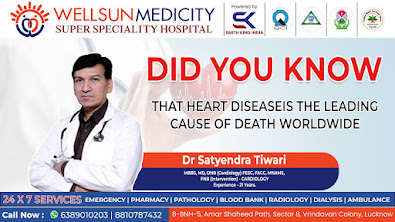What is Prostate Cancer
Prostate cancer is a type of cancer
that occurs in the prostate, a small walnut-shaped gland in males that produces
seminal fluid, which nourishes and transports sperm. This cancer typically
develops slowly and may initially be confined to the prostate gland, where it
might not cause serious harm. However, some types can be aggressive and spread
quickly.
Risk Factors
·
Several factors
can increase the risk of developing prostate cancer, including:
· Age: Risk increases with age, especially after 50.
· Family History: Having a family history of prostate cancer can raise risk.
· Race: African American men are at a higher risk than men of other races.
· Genetic Factors: Certain inherited gene mutations (e.g., BRCA1 and BRCA2) may increase risk.
Symptoms
In its early stages, prostate cancer
may not cause noticeable symptoms. As it progresses, symptoms may include:
·
Frequent
urination, especially at night
·
Difficulty
starting or stopping urination
·
Weak or
interrupted urine flow
·
Painful urination
or ejaculation
·
Blood in urine or
semen
·
Pain in the lower
back, hips, or pelvis
Diagnosis
Prostate cancer is typically diagnosed
through:
Digital Rectal Exam (DRE): A physical exam where a doctor checks the
prostate for abnormalities.
Prostate cancer is a type of cancer
that occurs in the prostate, a small walnut-shaped gland in males that produces
seminal fluid, which nourishes and transports sperm. This cancer typically
develops slowly and may initially be confined to the prostate gland, where it
might not cause serious harm. However, some types can be aggressive and spread
quickly.
Risk Factors
·
Several factors
can increase the risk of developing prostate cancer, including:
·
Age: Risk
increases with age, especially after 50.
·
Family History:
Having a family history of prostate cancer can raise risk.
·
Race: African
American men are at a higher risk than men of other races.
·
Genetic Factors:
Certain inherited gene mutations (e.g., BRCA1 and BRCA2) may increase risk.
Symptoms
In its early stages, prostate cancer may not
cause noticeable symptoms. As it progresses, symptoms may include:
·
Frequent
urination, especially at night
·
Difficulty
starting or stopping urination
·
Weak or
interrupted urine flow
·
Painful urination
or ejaculation
·
Blood in urine or
semen
·
Pain in the lower
back, hips, or pelvis
·
Diagnosis
·
Prostate cancer
is typically diagnosed through:
Digital Rectal Exam (DRE): A physical exam where a doctor checks the
prostate for abnormalities.
Prostate-Specific Antigen (PSA) Test: A blood test that measures the level of PSA,
a substance produced by the prostate, which can be elevated in men with
prostate cancer.
Biopsy: If tests indicate cancer, a biopsy may be performed to confirm the
diagnosis and determine the aggressiveness of the cancer.
Treatment
Treatment options vary depending on the stage of the cancer, the patient's overall health, and personal preferences, and may include:
·
Active Surveillance:
Monitoring the cancer closely without immediate treatment.
·
Surgery:
Prostatectomy (removal of the prostate) can be curative, especially in
localized cancer.
·
Radiation
Therapy: Targeting cancer cells with high-energy radiation.
·
Hormone Therapy:
Reducing levels of male hormones that can fuel cancer growth.
·
Chemotherapy:
Using drugs to kill cancer cells, typically reserved for advanced cases.
·
Immunotherapy:
Using the body’s immune system to fight cancer.
Prognosis
The prognosis for prostate cancer varies
widely. Many men diagnosed with early-stage prostate cancer may live for many
years without it affecting their quality of life. Regular screening and early
detection improve treatment outcomes significantly.
If you have any specific questions or
need more detailed information, feel free to ask!
www.wellsunmedicity.com
Dr. Neeraj Agarwal
MBBS (KGMU) MS General Surgeon
M.ch Urologist, Kidney Transplant Surgery
















